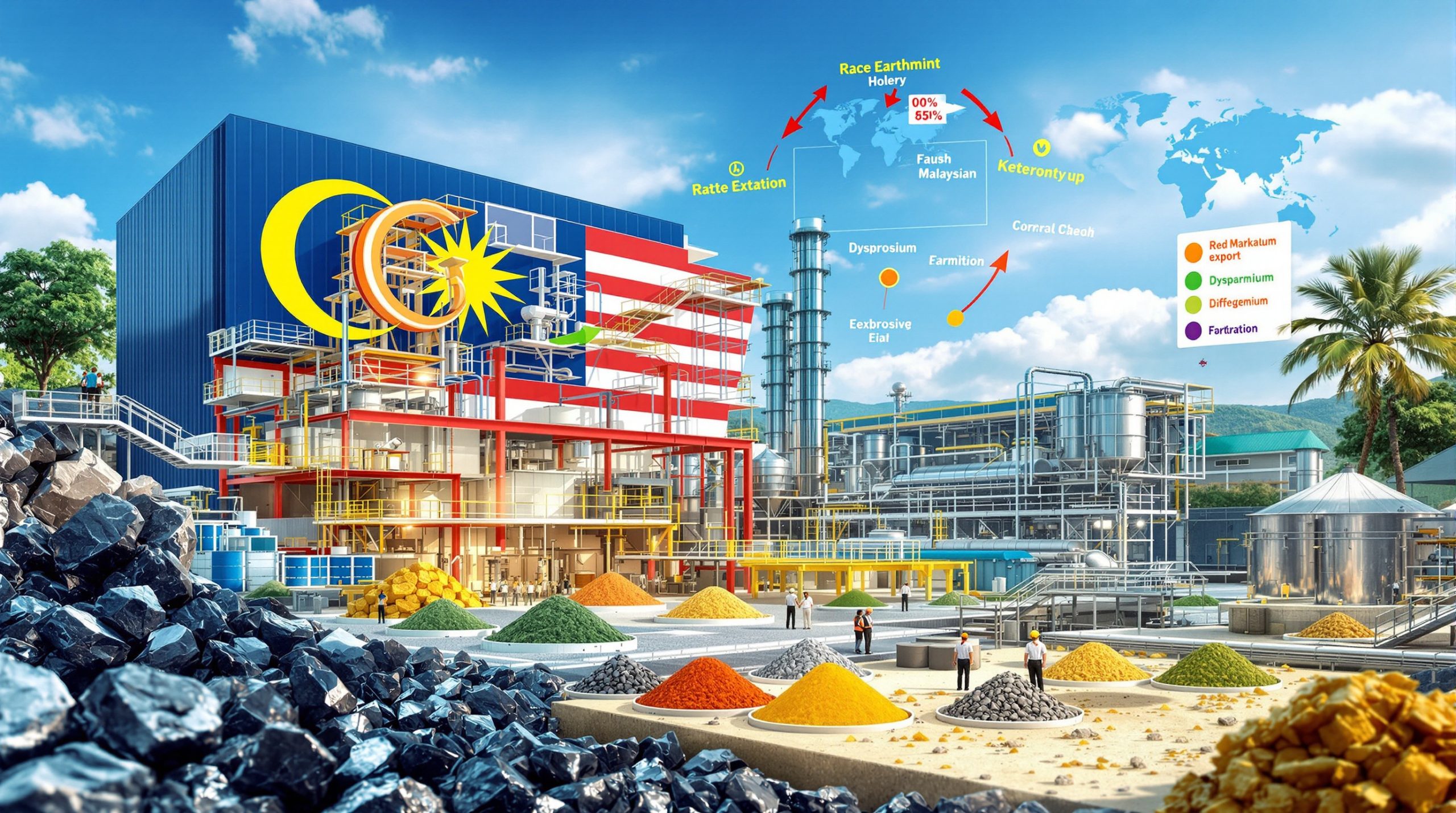What Happened at the Luhihi Gold Mine in Eastern Congo?
On April 24, 2025, tragedy struck the Luhihi gold mine in eastern Democratic Republic of Congo when a devastating collapse claimed at least 10 lives. According to Douglas Dunia Masumbuko, the M23-appointed South Kivu governor, the death toll could rise further as numerous miners suffered severe injuries during the catastrophic event.
"This incident resulted from uncontrolled construction and poor maintenance of gold wells," Masumbuko stated in his official report, highlighting the persistent safety issues plaguing the region's artisanal mining operations.
The collapse occurred in territory currently under the control of M23 rebels, who have maintained dominance over eastern Congo's two largest cities since January 2025. This political context has significantly complicated rescue efforts and subsequent investigations.
The Deadly Collapse and Immediate Impact
The Luhihi mine collapse represents one of the deadliest mining incidents in South Kivu province in recent years. Rescue operations faced significant challenges due to limited emergency response capabilities in rebel-controlled territory. Local reports indicate that primitive tools and manual digging were the primary rescue methods available to first responders.
"We lack basic emergency equipment that could have saved more lives," explained a local mining association representative who requested anonymity due to security concerns. "The injured had to be transported over rough terrain to reach medical facilities, worsening their conditions."
The former provincial governor, Jean-Jacques Purusi, acknowledged the collapse but notably refrained from providing casualty figures, highlighting the contested nature of governance and information in the region.
Causes of the Mine Collapse
Mining experts familiar with artisanal operations in eastern Congo point to multiple contributing factors beyond the "uncontrolled construction" cited by officials. The Luhihi mine, like most artisanal operations in the region, lacks engineered support structures, proper ventilation systems, and professional oversight.
Geological assessments of the area indicate that the gold-bearing soil in Luhihi is particularly susceptible to structural failure during the rainy season, which typically runs from October to May. The combination of saturated soil and improvised tunneling creates a deadly risk that miners knowingly accept due to economic necessity.
A 2024 survey by local NGO Justice pour Tous found that safety audits were "nonexistent in 95% of artisanal sites due to state absence," creating conditions where preventable accidents become inevitable tragedies.
Why Mining Safety Remains a Critical Issue in Congo
The Luhihi collapse represents just one incident in a persistent pattern of mining disasters throughout the Democratic Republic of Congo. With approximately 2 million Congolese engaged in artisanal mining—producing about 90% of the country's gold output—the scale of unsafe operations is staggering.
Since 2020, eastern Congo has recorded over 1,000 mining-related deaths annually, with countless more injuries going unreported. The concentration of these accidents in artisanal operations highlights the disproportionate risk faced by small-scale miners working without corporate resources or regulatory oversight.
"Mining accidents will continue to be rife until we address the fundamental absence of safety infrastructure," noted a representative from the Federation of Congolese Mining Cooperatives. "Most miners don't even have access to basic protective equipment like helmets or proper breathing apparatus."
Prevalence of Mining Accidents in the Region
The deadly cycle of mining accidents in eastern Congo follows a predictable pattern. Similar collapses claimed over 50 lives in Kamituga in 2023 and approximately 30 in Masisi in 2024, demonstrating that the Luhihi tragedy is part of a regional crisis rather than an isolated incident.
A 2024 assessment by the Kivu Safety Initiative found that only 12% of artisanal miners had access to basic safety equipment such as helmets or oxygen meters. Without these fundamental protective measures, miners face extreme risks daily for meager compensation.
"We know the dangers, but what choice do we have?" asks Espérance Matumba, a leader in a local miner syndicate. "We risk death daily but earn only $3-$5 for 12-hour shifts. Our families must eat."
Artisanal Mining Conditions and Challenges
Artisanal gold mining in eastern Congo typically involves rudimentary techniques passed down through generations. Miners dig narrow shafts using hand tools, sometimes reaching depths of 30 meters or more without proper reinforcement or ventilation.
The absence of technical expertise means that 80% of these informal mines lack critical safety features like ventilation systems and collapse-resistant supports. Additionally, the use of mercury for gold processing creates severe health hazards, with contaminated water causing long-term health crises in mining communities.
Environmental degradation further compounds these risks, as deforestation and erosion make mining sites increasingly unstable. Without regulatory enforcement, operators have little incentive to invest in costly safety measures when profit margins are already thin. Efforts toward enhancing underground safety have been limited in artisanal mining operations compared to larger commercial ventures.
How Does the Political Context Affect Mining Operations?
The mine collapse in eastern Congo occurred in a complex political landscape dominated by armed conflict. Since January 2025, M23 rebels have controlled approximately 60% of South Kivu's mining sites, including the two largest cities in eastern Congo.
This rebel governance creates a parallel authority structure that complicates safety oversight and emergency response. While Douglas Dunia Masumbuko serves as the M23-appointed governor of South Kivu province, his administration lacks the resources and legitimacy of internationally recognized government institutions.
"M23 taxes miners $5-$20 daily per shaft, diverting approximately $2 million monthly to arms procurement rather than safety infrastructure," explains conflict analyst Jean-Baptiste Ntaganda. "This extraction economy prioritizes short-term revenue over miner welfare."
M23 Rebel Control and Governance
The M23 movement, which reemerged as a significant military force in 2022, has established administrative control over vast territories rich in mineral resources. Their parallel governance structure imposes informal licensing fees on mining operations, effectively bypassing federal revenue systems.
This unofficial taxation rarely translates into improved safety conditions or infrastructure investments for mining communities. Instead, rebel authorities focus on maintaining mineral flow to generate funds for military operations and political control.
A 2025 UN Security Council Resolution (2677) specifically condemned rebel exploitation of minerals as "a catalyst for regional destabilization," highlighting international recognition of the connection between resource extraction and ongoing violence. These dynamics represent significant mining governance challenges that extend beyond normal regulatory concerns.
Regional Conflict and Peace Efforts
The long-running conflict in eastern Congo is deeply rooted in the spillover of Rwanda's 1994 genocide, but control over the region's vast mineral resources remains a central factor in perpetuating violence. Gold smuggled via Uganda and Rwanda generates an estimated $400 million annually for armed groups operating in the region.
In a potentially significant development, the Congolese government and M23 leadership pledged to work toward peace following talks in Qatar that concluded just days before the Luhihi collapse. These negotiations represent the seventh ceasefire attempt since 2022, raising what observers cautiously describe as "a glimmer of hope" in the latest cycle of violence.
The Qatar peace accord specifically addresses mining governance, though implementation remains uncertain given the history of failed agreements. Mining communities express skepticism about whether peace negotiations will translate into tangible safety improvements on the ground.
What Are the Broader Implications for Congo's Mining Industry?
The tragedy at Luhihi exemplifies the fundamental challenges facing Congo's mining sector and illuminates the profound disconnect between the country's mineral wealth and the welfare of its citizens. Despite possessing an estimated $24 trillion in untapped mineral resources, roughly 72% of mining revenue is lost to smuggling and illicit financial flows.
Gold exports fell approximately 40% in 2024 due to rebel disruptions, costing the national treasury an estimated $1.2 billion in lost revenue that could have funded crucial infrastructure and safety improvements.
"Formalizing artisanal mining could boost GDP by 8% annually," notes a 2025 World Bank report, highlighting the significant economic potential of reforming the sector. However, achieving such formalization remains extraordinarily difficult in conflict-affected regions with contested governance.
Resource Control and Conflict
The struggle for control of Congo's mineral wealth continues to fuel regional instability, creating a self-reinforcing cycle of violence and exploitation. Gold mining represents a particularly significant economic activity in eastern Congo, where easily transportable high-value minerals provide ideal funding for armed groups.
Traceability initiatives like the OECD Due Diligence Guidance face systematic sabotage in conflict zones, as armed groups actively work to undermine transparency efforts that threaten their revenue streams. Investigations have revealed that Chinese and UAE refiners purchase approximately 65% of conflict gold, effectively circumventing international sanctions designed to curtail the trade.
The 2023 seizure of 500 kilograms of M23-linked gold at Entebbe Airport underscores the sophistication of transnational smuggling networks that connect remote mining sites to global markets. Despite international awareness of these supply chains, effective intervention remains elusive. Understanding the evolution of gold mining provides context for how artisanal operations fit into the broader industry landscape.
Safety and Regulation Challenges
The Luhihi collapse underscores the urgent need for improved safety standards in Congo's mining sector, yet effective regulation remains exceedingly difficult in areas with contested governance. Without strong state institutions capable of enforcing safety codes, similar accidents will inevitably continue.
Some limited progress has been demonstrated in more stable regions. The 2024 ITSCI certification of 120 mines in Katanga province reportedly reduced child labor by 30% while improving basic safety conditions. This suggests that formalization can yield tangible benefits when supported by consistent governance and market incentives.
However, replicating such successes in conflict zones requires addressing underlying security concerns that prevent regulators from accessing mining sites. Until peace is established, safety improvements will likely remain isolated and fragile achievements in an otherwise dangerous industry. Analysts suggest that geopolitical investor strategies increasingly need to account for these complex risk factors.
According to a recent investigation by the BBC, widespread corruption continues to hamper regulation efforts across Congo's mining sector, enabling dangerous operations to continue despite evident risks.
FAQ About the Mine Collapse in Eastern Congo
How many people died in the mine collapse?
At least 10 people were killed in the collapse at the Luhihi gold mine, with the potential for the death toll to rise due to additional injuries. As of April 24, reports indicated that more than 15 miners remained hospitalized with critical injuries.
What caused the mine collapse in eastern Congo?
According to Douglas Dunia Masumbuko, the M23-appointed South Kivu governor, the collapse was caused by "uncontrolled construction and poor maintenance of gold wells" in the area. Mining experts also point to the combination of seasonal rains, inadequate structural supports, and improvised excavation techniques as contributing factors.
Who controls the region where the mine collapse occurred?
The mine is located in an area of eastern Congo currently controlled by M23 rebels, who have seized the region's two largest cities since January 2025. This rebel governance complicates safety oversight and emergency response capabilities in the mining sector.
Are mining accidents common in the Democratic Republic of Congo?
Yes, mining accidents are described as "rife" in the Democratic Republic of Congo. Similar collapses in Kamituga (2023) and Masisi (2024) claimed dozens of lives, highlighting the recurring nature of these tragedies. Artisanal mining sites face particularly high risks due to limited regulation, inadequate safety equipment, and minimal technical expertise.
The persistence of these accidents reflects both the hazardous nature of artisanal mining and the broader governance challenges in a region affected by decades of conflict over resource control. According to Al Jazeera reporting, similar disasters have occurred regularly despite international attention to the issue.
Understanding global market insights about commodities like gold is essential for contextualizing how these local tragedies connect to worldwide economic forces.
Ready to Discover the Next ASX Mining Opportunity?
Don't miss a potential market-moving discovery announcement on the ASX. Explore Discovery Alert's proprietary Discovery IQ model that provides real-time notifications of significant mineral discoveries, helping you position yourself ahead of the market for both short and long-term investment opportunities at https://discoveryalert.com.au/discoveries/.




